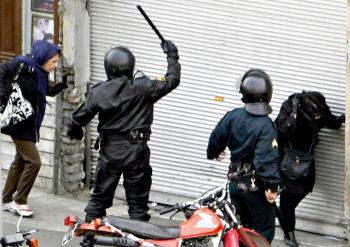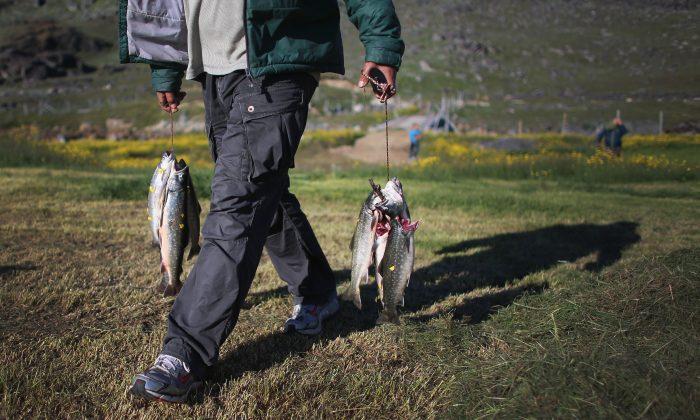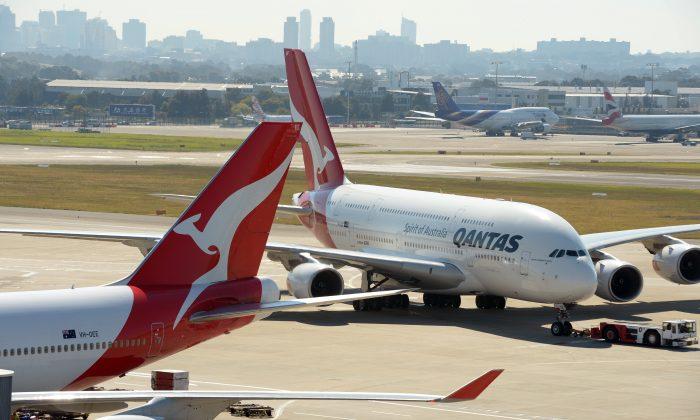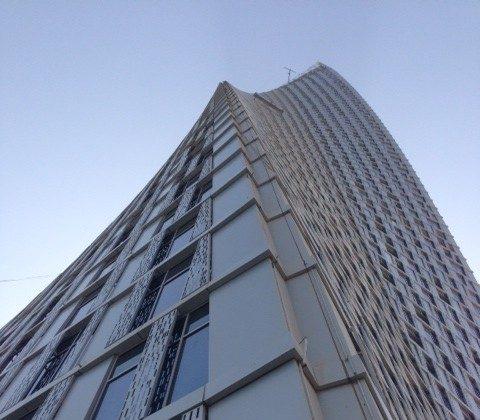In a event choreographed to drown out any planned opposition protest, supporters of the regime swamped Azadi Square carrying national flags and placards that read “Down with America,” as part of celebrations to mark the 31st anniversary of the Iranian Revolution.
President Mahmoud Ahmadinejad claimed that the country had already enriched its uranium to 20 percent, and had the capacity to produce an even higher grade material which could be used in a nuclear weapon.
“The Iranian nation is brave enough that if one day we wanted to build nuclear bombs we would announce it publicly without being afraid of you,” Ahmadinejad said in a speech to the crowd.
The presence of thousands of police and Basij militiamen ensured that planned opposition protests were quickly crushed.
Web sites affiliated to the ‘Green Movement’ said that a young woman named Leila Zareii, was killed and a number of others were wounded or arrested.
The three opposition leaders—Mehdi Karroubi, Mohammed Khatami, and Mir Hossein Moussavi—faced resistance from police when they attempted to make their way to the main square.
Cars carrying Karroubi, and Khatami —a former president—were surrounded by plainclothes security forces.
The windows of the vehicle carrying Karroubi were smashed and his son Ali, was dragged out of the door and detained. A bodyguard in the vehicle was also injured in the scuffle.
Meanwhile Khatami’s brother Reza, and his wife Zahra Eshraghi were also detained temporarily. Eshraghi is a granddaughter of the founder of the Islamic Republic, Ayatollah Ruhollah Khomeini, but is also a sympathizer of the Green Movement.
However protests did take place in some parts of the capital. Opposition activists have posted on YouTube videos of protests carrying placards and chanting “Death to the Dictator.”
Opposition Web sites claimed that in Sadeghieh Square, a mile away from the main demonstrations, security forces used live ammunition, knives, teargas, and paintballs that would enable them to identify protesters for arrest.
The apparent ease with which opposition protests were dispersed has disheartened activists.
“They won and we lost,” an anonymous protester was quoted as saying by several newspapers. “They defeated us. They were able to gather so many people. But this doesn’t mean we have been defeated for good. It’s a defeat for now, today. We need time to regroup.”
In the buildup to Thursday, overseas media had been anticipating a public crackdown on the same scale as Tiananmen Square.
However, analysts have claimed that Tehran has been studying techniques employed by its diplomatic ally, China, to disperse protests early.
Indeed, activists noted that Chinese-supplied armored vehicles with water cannons had been used in suppressing protests.
So far, sanctions against Iran have been thwarted by the possibility that China may use its U.N. Security Council veto.
However, U.S. politicians have argued that there may still be time to arrive at a diplomatic solution to the growing crisis. According to a report on Thursday in the Washington Post, there has been a drop in production at Iran’s main uranium enrichment plant near the city of Natanz.
The assessment, based on three years of internal data from U.N. nuclear inspections, suggest that Iran’s mechanical woes are deeper than previously known, the Post reported.







Friends Read Free